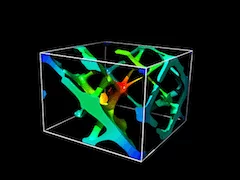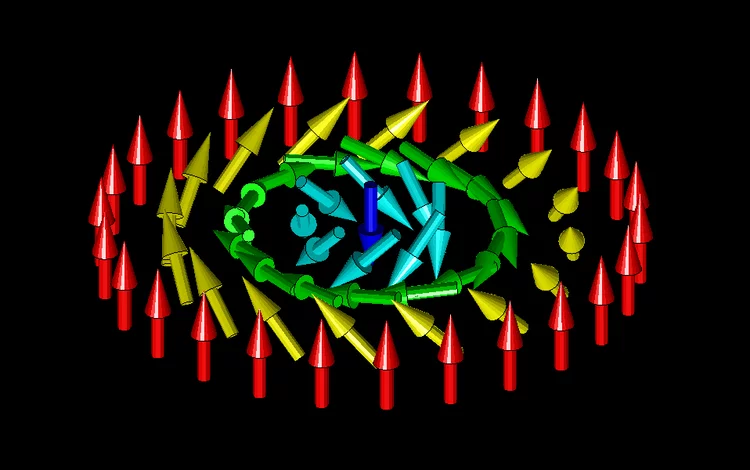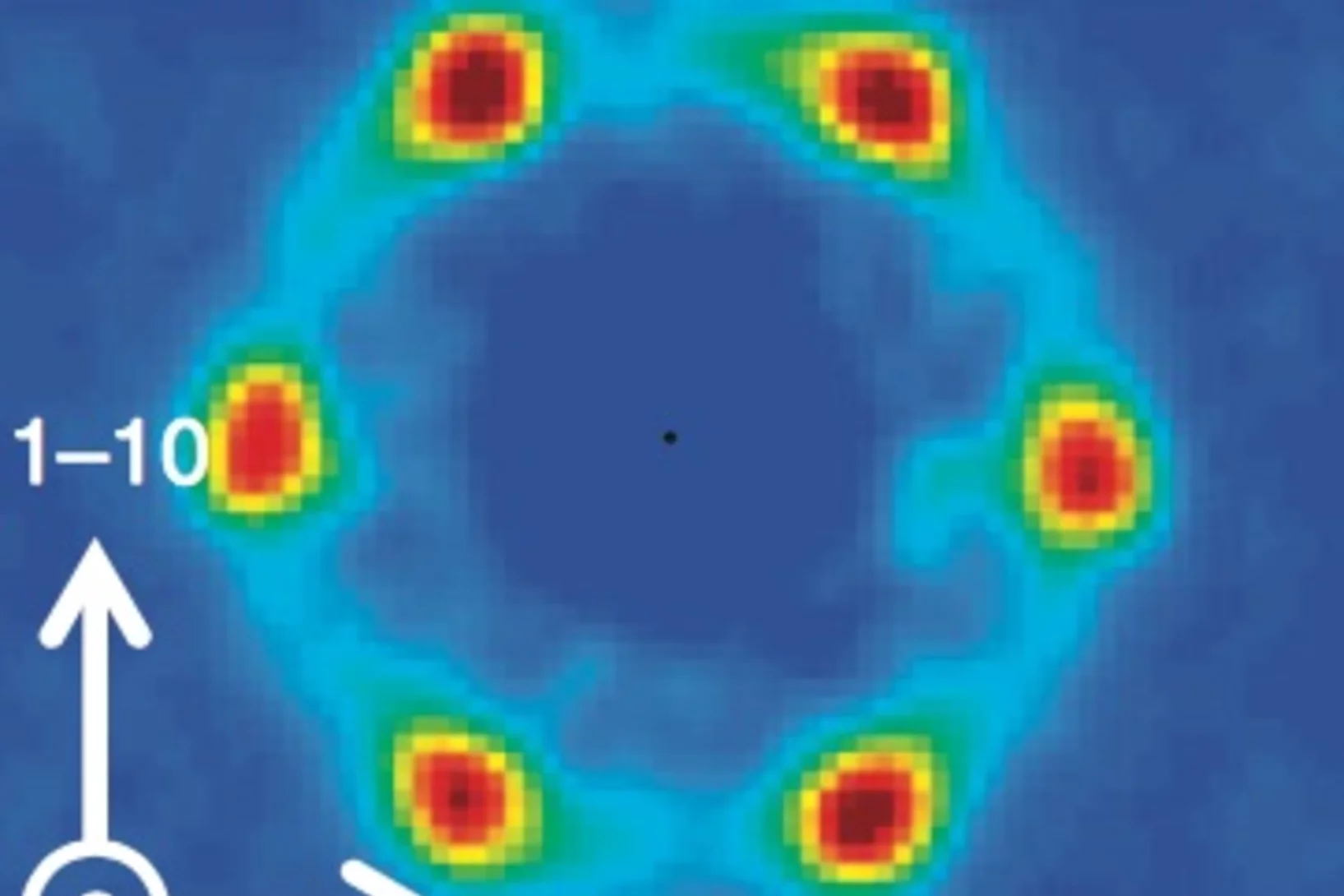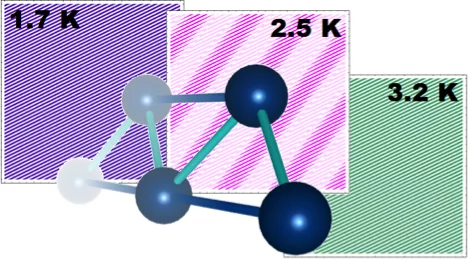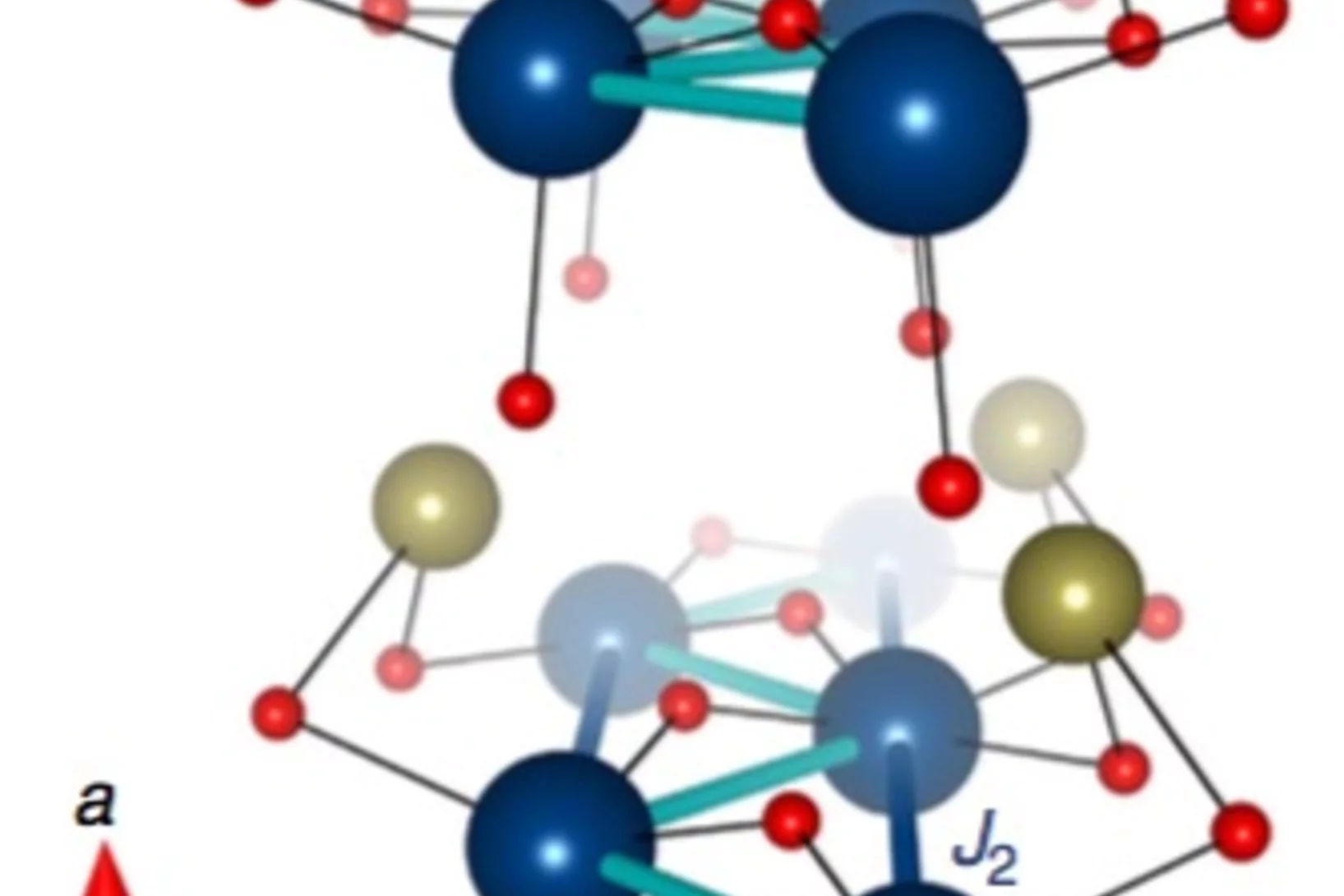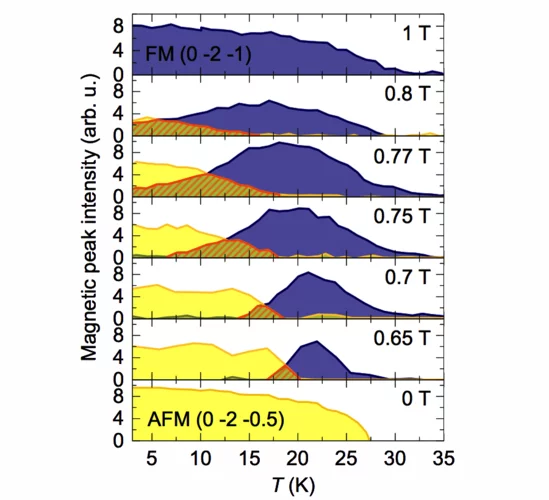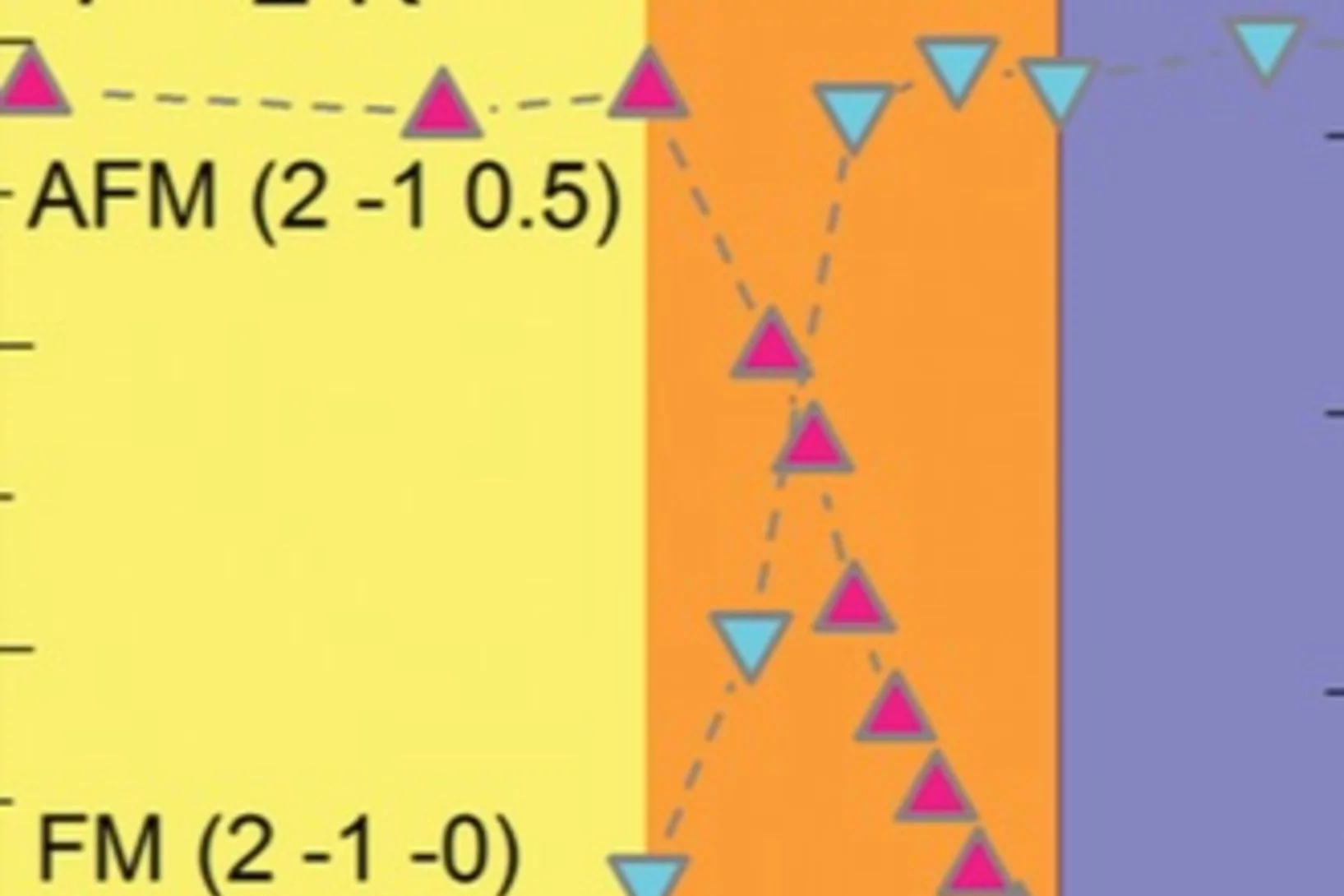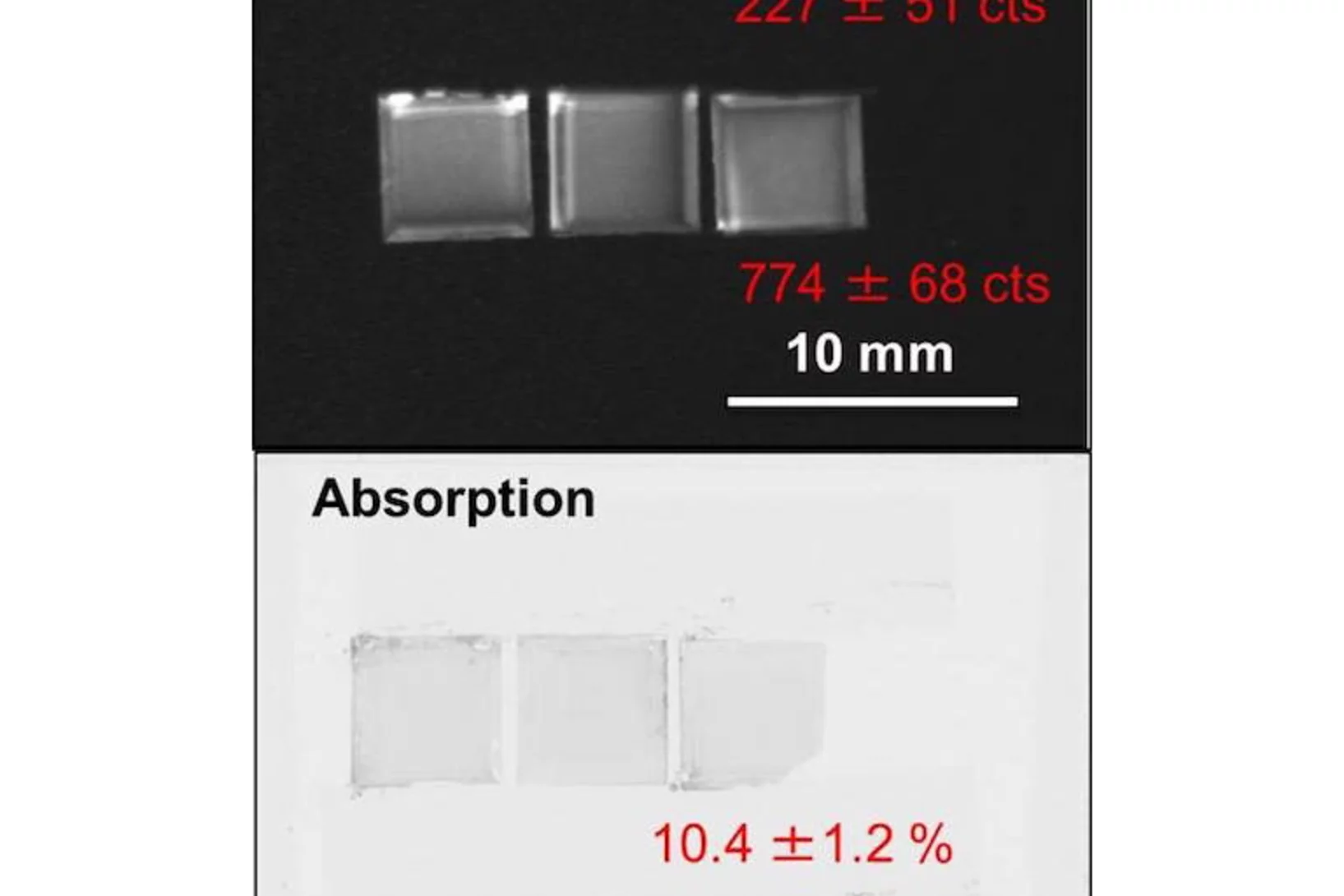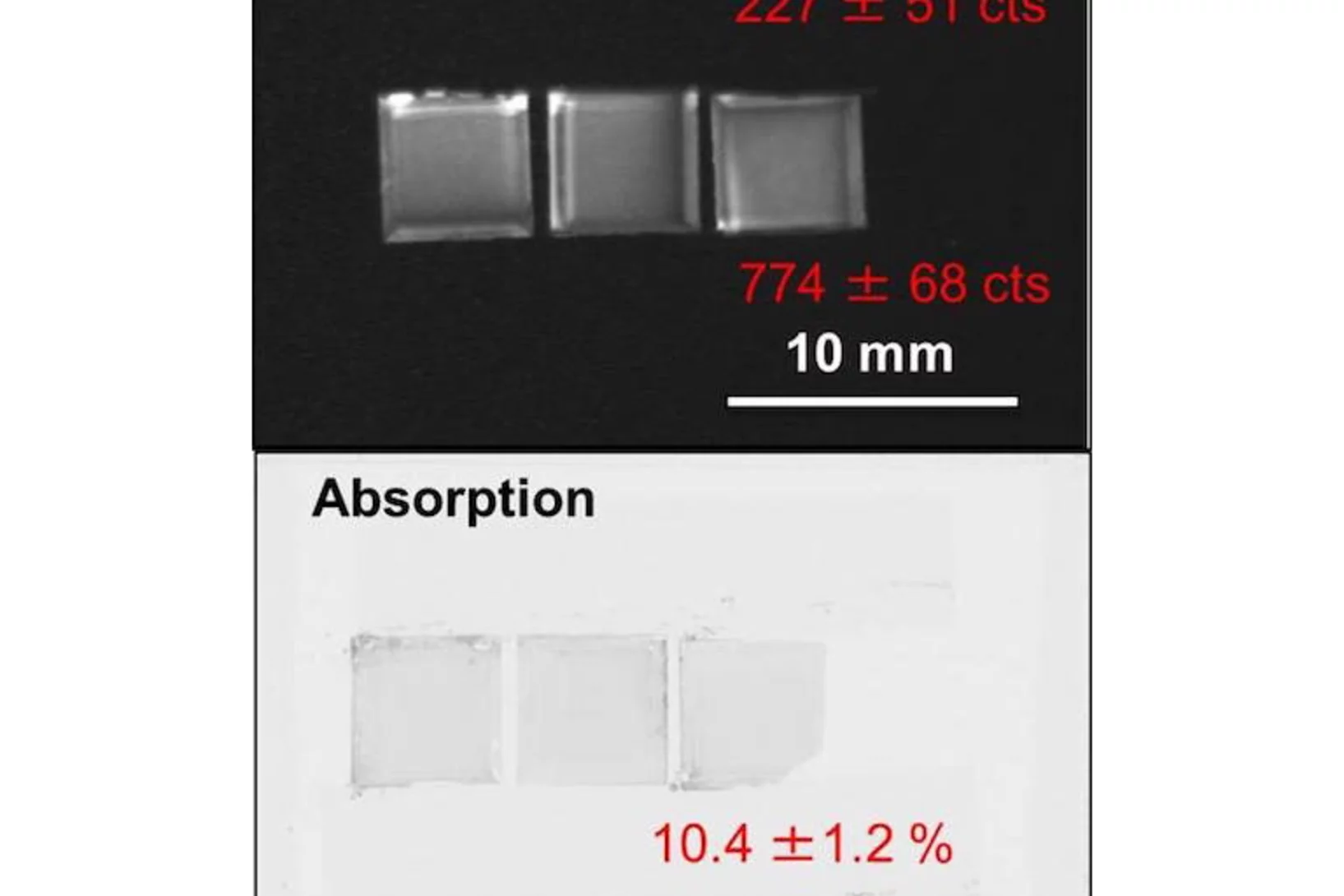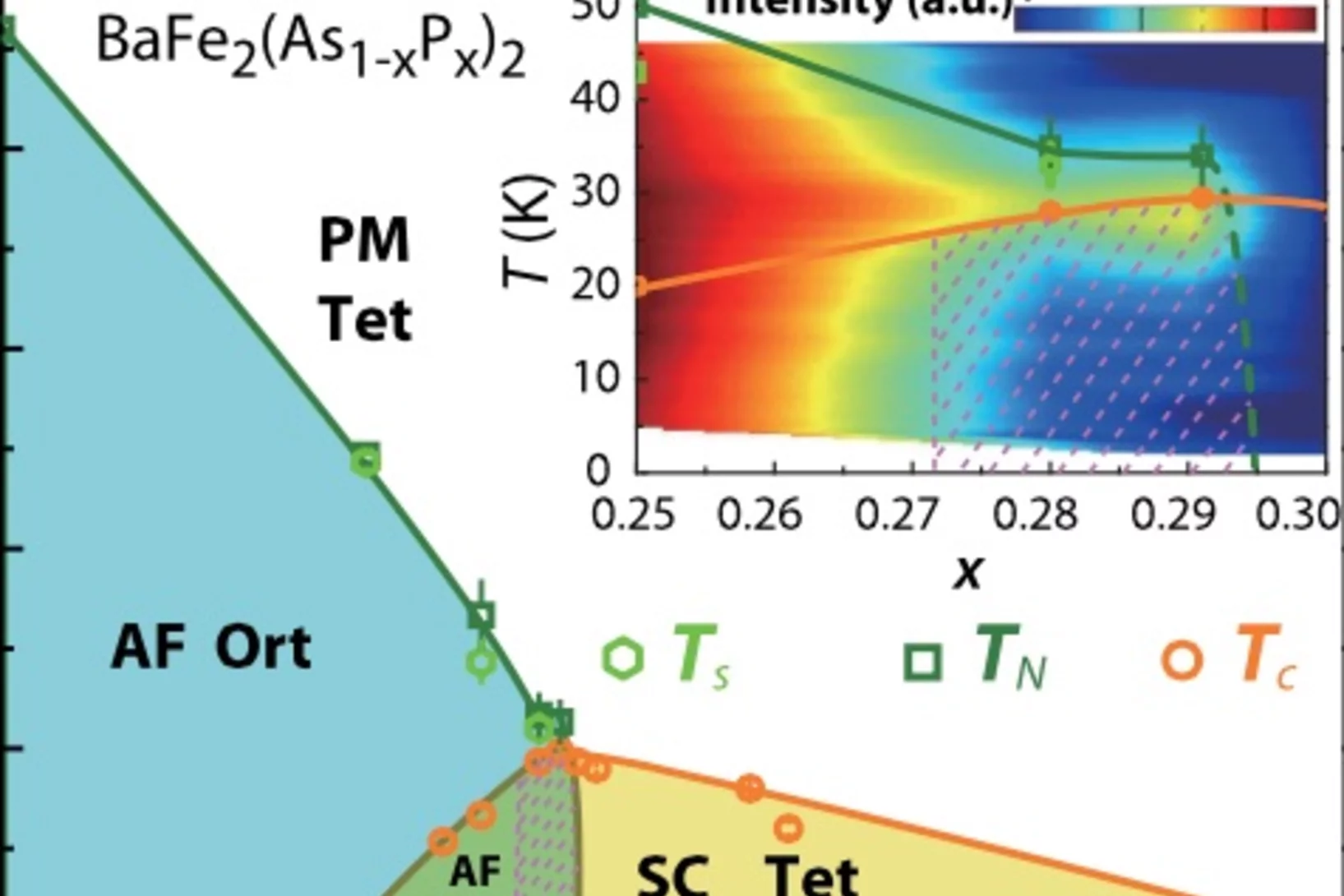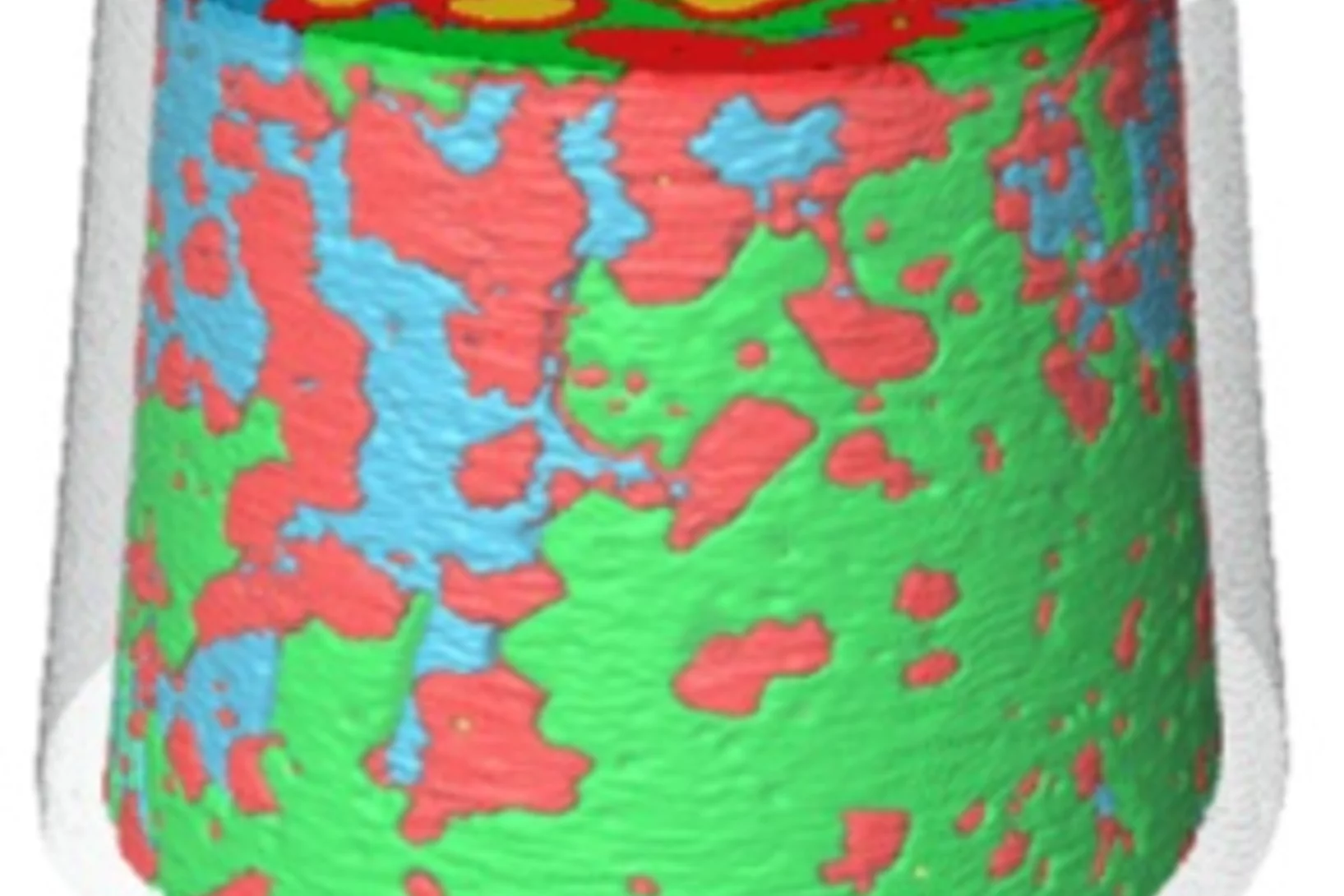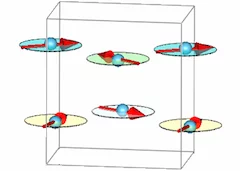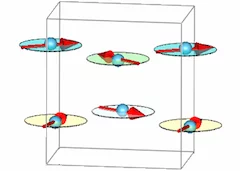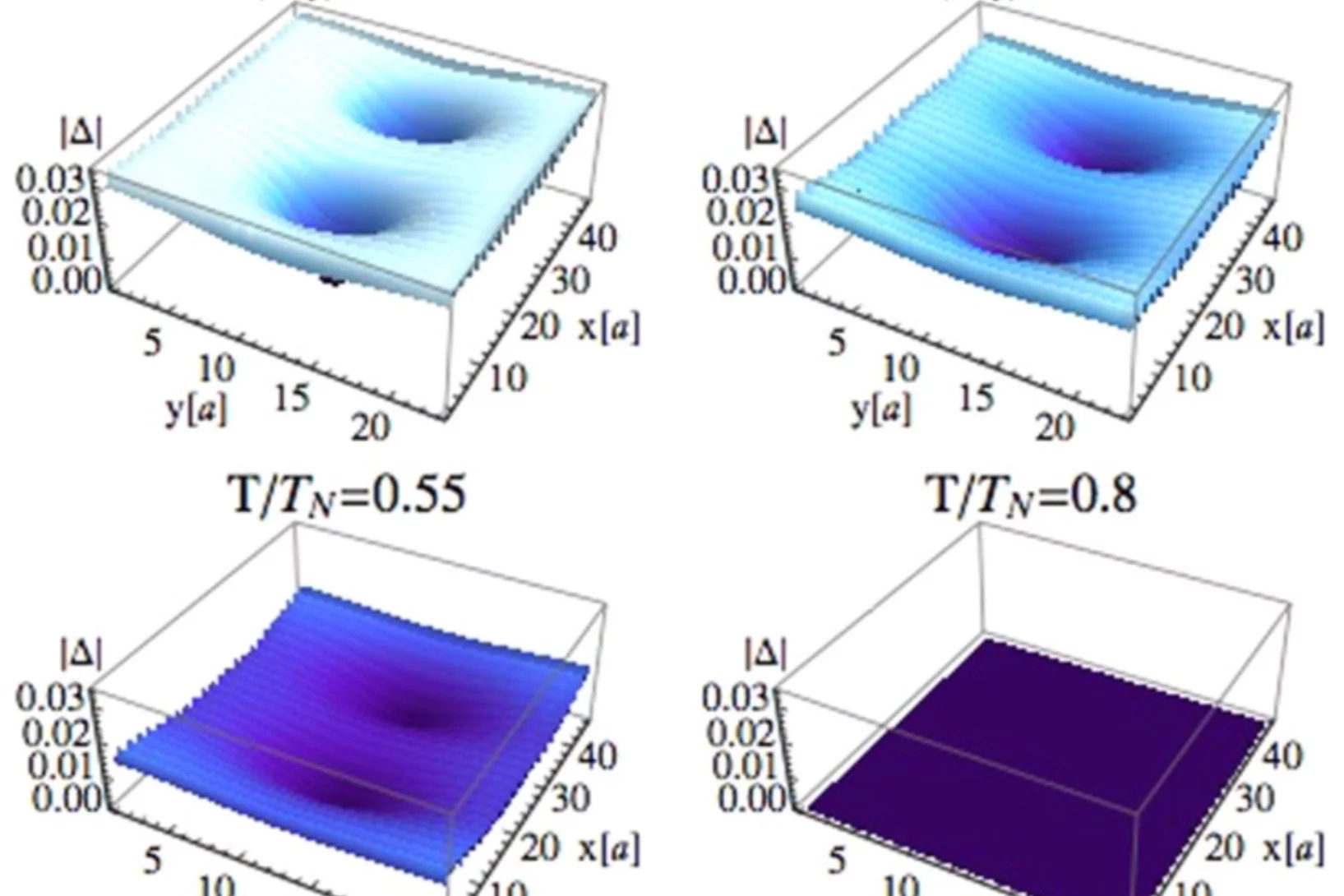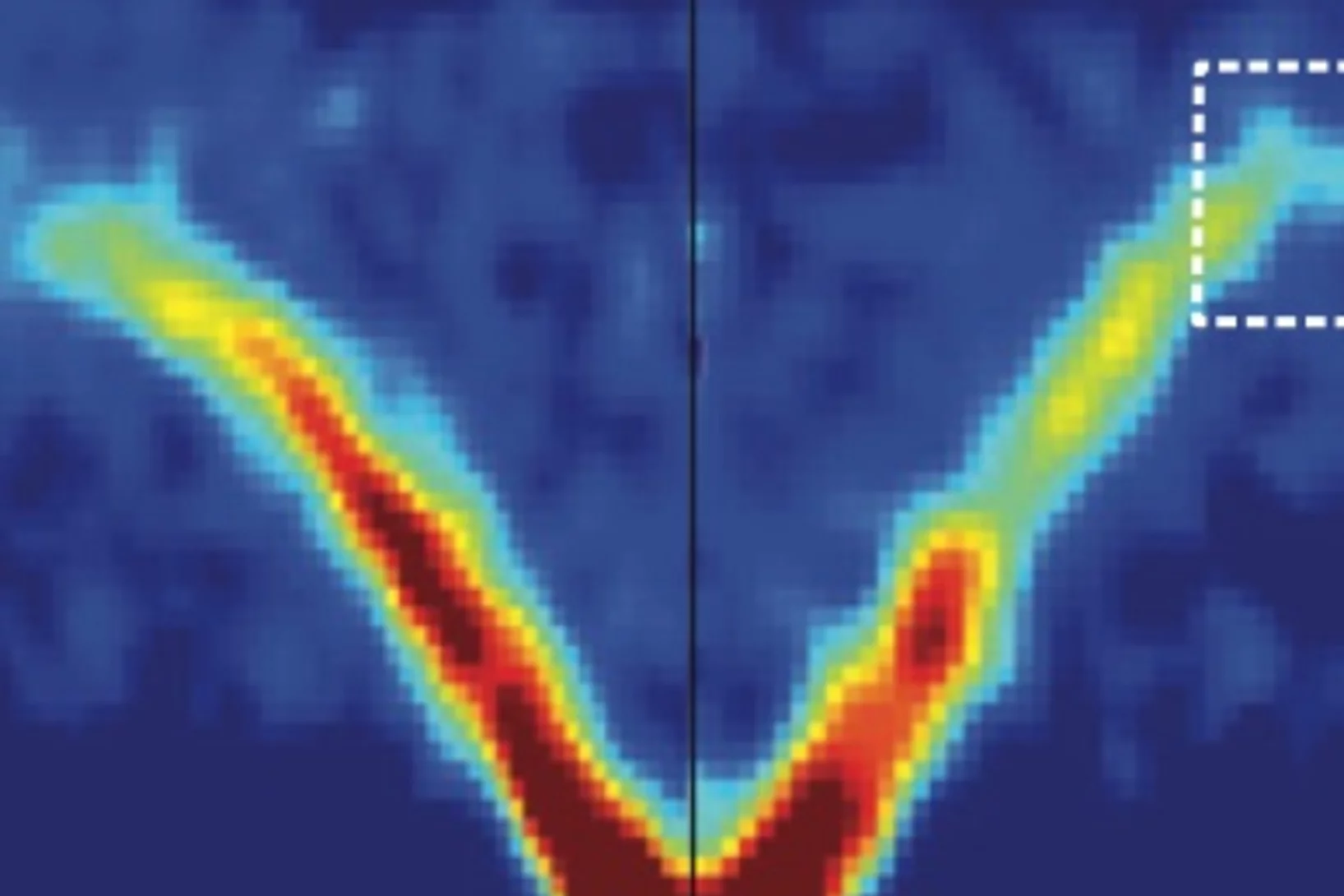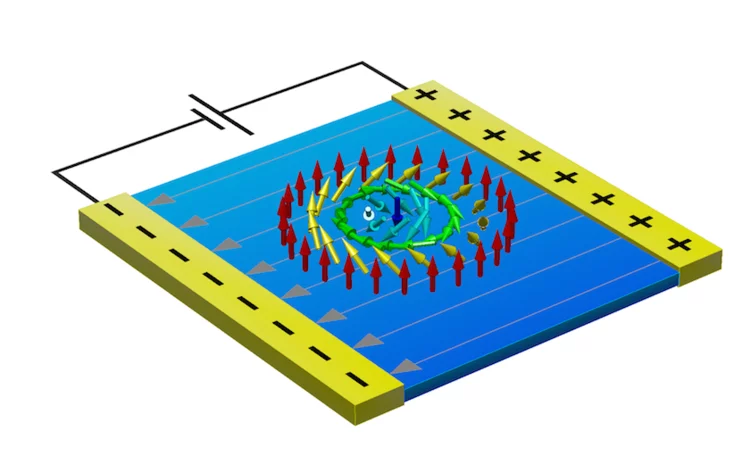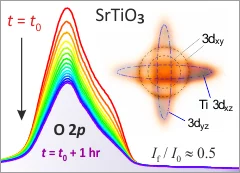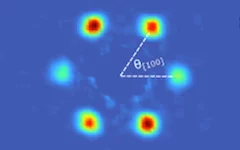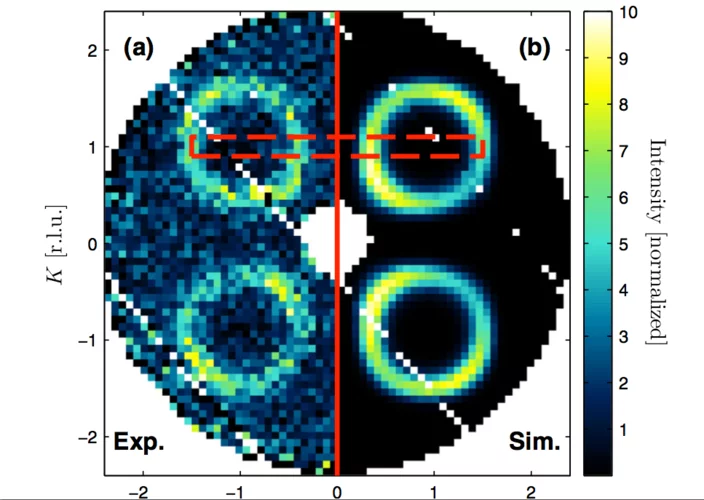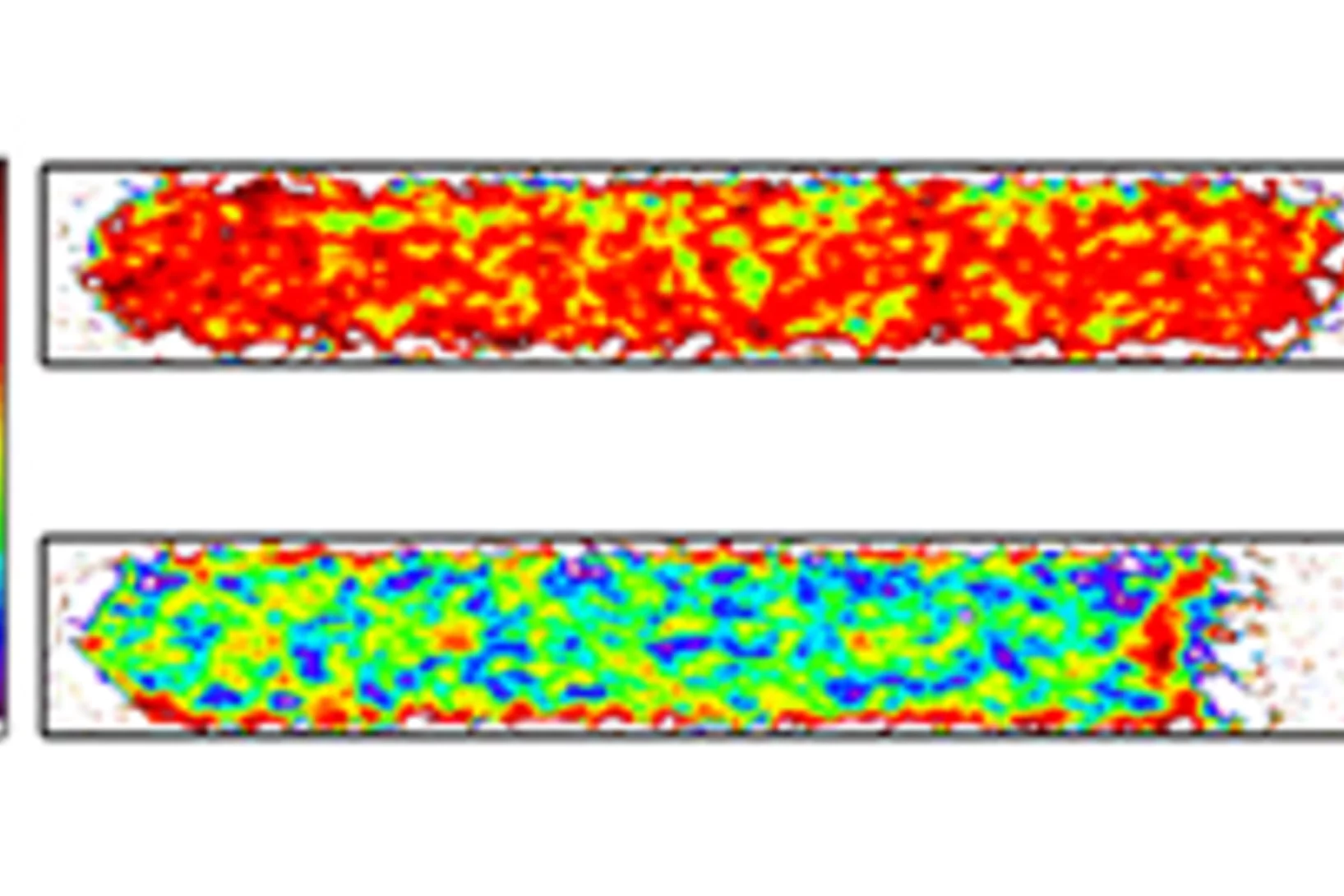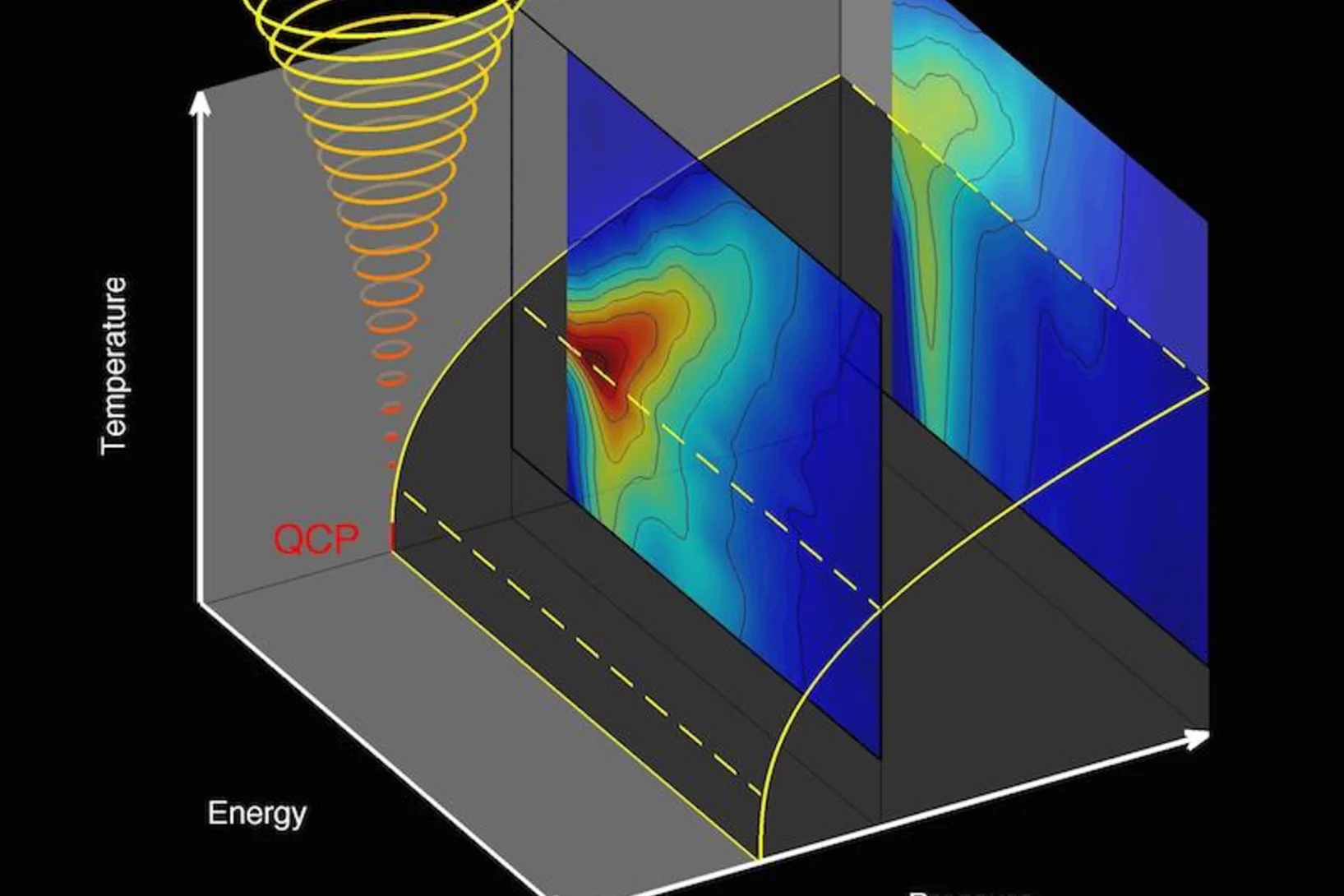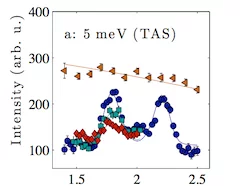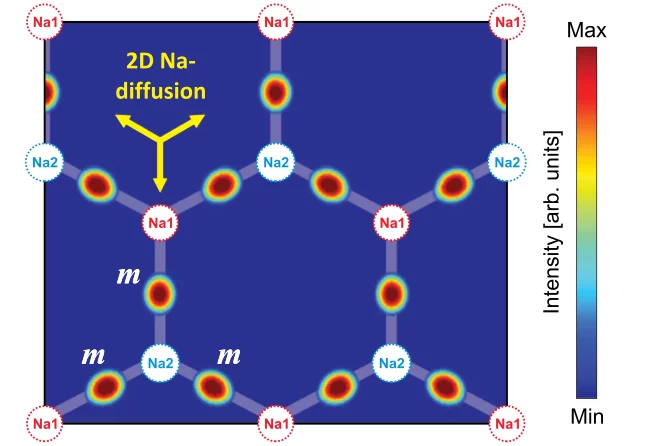Lattice dynamics of α-cristobalite and the Boson peak in silica glass
This work marks a decisive step in the solution of the longstanding problem understanding the origin of the Boson peak in silica glass. The investigation by means of diffuse and inelastic x-ray scattering and lattice dynamics calculations from first principles allow for a direct comparison of the atomic motion in crystalline silica polymorphs and silica glass. The article was selected to illustrate the cover page of Journal of Physics: Condensed Matter, Vol. 27, Nr. 30.
Candidate Quantum Spin Liquid in the Ce3+ Pyrochlore Stannate Ce2Sn2O7
We report the low-temperature magnetic properties of Ce2Sn2O7, a rare-earth pyrochlore. Our suscep- tibility and magnetization measurements show that due to the thermal isolation of a Kramers doublet ground state, Ce2Sn2O7 has Ising-like magnetic moments of ∼1.18 μB. The magnetic moments are confined to the local trigonal axes, as in a spin ice, but the exchange interactions are antiferromagnetic.
A new class of chiral materials hosting magnetic skyrmions beyond room temperature
Magnetic skyrmions are tiny, magnetic-spin vortices that can emerge in magnetic materials. Due to their nanometric size, skyrmions could be used to build extremely high density memory spintronics devices. However, stable skyrmions are not easy to find and control, and are usually only observed well below room temperature.
A new class of chiral materials hosting magnetic skyrmions beyond room temperature
Skyrmions, topologically protected vortex-like nanometric spin textures in magnets, have been attracting increasing attention for emergent electromagnetic responses and possible technological applications for spintronics. In particular, metallic magnets with chiral and cubic/tetragonal crystal structure may have high potential to host skyrmions that can be driven by low electrical current excitation.
Spin-stripe phase in a frustrated zigzag spin-1/2 chain
In strongly correlated electron systems periodic modulations on the nano-scale have typically been associated with competition between short- and long-range interactions, for example, between exchange and dipole-dipole interactions in the case of ferromagnetic thin films. Here we show that spin-stripe textures may develop also in antiferromagnets, where long-range dipole-dipole magnetic interactions are absent.
Spin-stripe phase in a frustrated zigzag spin-1/2 chain
Motifs of periodic modulations are encountered in a variety of natural systems, where at least two rival states are present. In strongly correlated electron systems, such behaviour has typically been associated with competition between short- and long-range interactions, for example, between exchange and dipole-dipole interactions in the case of ferromagnetic thin films.
Controllable Broadband Absorption in the Mixed Phase of Metamagnets
Combination of neutron scattering, muon spin relaxation, specific heat, ac and dc magnetization measurements, and electron magnetic resonance, reveals the ability of metamagnetic materials to absorb the electromagnetic radiation in an extremely broad frequency range.
Magnetoelectric domain control in multiferroic TbMnO3
The manipulation of domains by external fields in ferroic materials is of major interest for applications. In multiferroics with strongly coupled magnetic and electric order, however, the magnetoelectric coupling on the level of the domains is largely unexplored. We investigated the field-induced domain dynamics of TbMnO3 in the multiferroic ground state and across a first-order spin-flop transition.
Controllable Broadband Absorption in the Mixed Phase of Metamagnets
Materials with broad absorption bands are highly desirable for electromagnetic filtering and processing applications, especially if the absorption can be externally controlled. Here, a new class of broadband-absorption materials is introduced. Namely, layered metamagnets exhibit an electromagnetic excitation continuum in the magnetic-field-induced mixed ferro- and antiferromagnetic phase.
Isotopically-enriched gadolinium-157 oxysulfide scintillator screens for the high-resolution neutron imaging
High-resolution neutron imaging (Neutron Microscope project) requires highly efficient scintillator screens. Our aim is to achieve sub-5µm spatial resolution. Here, we demonstrate the feasibility of the production of isotopically-enriched gadolinium oxysulfide scintillator screens for the high spatial-resolution neutron imaging. Approximately 10 g of 157Gd2O2S:Tb was produced in the form of fine powder (the level of 157Gd enrichment above 88%).
Isotopically-enriched gadolinium-157 oxysulfide scintillator screens for the high-resolution neutron imaging
High-resolution neutron imaging (Neutron Microscope project) requires highly efficient scintillator screens. Our aim is to achieve sub-5µm spatial resolution. Here, we demonstrate the feasibility of the production of isotopically-enriched gadolinium oxysulfide scintillator screens for the high spatial-resolution neutron imaging. Approximately 10 g of 157Gd2O2S:Tb was produced in the form of fine powder (the level of 157Gd enrichment above 88%).
Structural and Magnetic Phase Transitions near Optimal Superconductivity in BaFe2(As1-xPx)2
We use nuclear magnetic resonance (NMR), high-resolution x-ray, and neutron scattering studies to study structural and magnetic phase transitions in phosphorus-doped BaFe2(As1-xPx)2. Previous transport, NMR, specific heat, and magnetic penetration depth measurements have provided compelling evidence for the presence of a quantum critical point (QCP) near optimal superconductivity at x=0.3.
Mass Density and Water Content of Saturated Never-Dried Calcium Silicate Hydrates
Calcium silicate hydrates (C-S-H) are the most abundant hydration products in ordinary Portland cement paste. Yet, despite the critical role they play in determining mechanical and transport properties, there is still a debate about their density and exact composition. Here, the site-specific mass density and composition of C-S-H in hydrated cement paste are determined with nanoscale resolution in a nondestructive approach.
Magnetic inhomogeneity on a triangular lattice: the magnetic-exchange versus the elastic energy and the role of disorder
Inhomogeneity in the ground state is an intriguing, emergent phenomenon in magnetism. Recently, it has been observed in the magnetostructural channel of the geometrically frustrated α-NaMnO2, for the first time in the absence of active charge degrees of freedom. Here we report an in-depth numerical and local-probe experimental study of the isostructural sister compound CuMnO2 that emphasizes and provides an explanation for the crucial differences between the two systems.
Pressure dependence of the magnetic order in CrAs
L. Keller et al., Phys. Rev. B 91, 020409(R) (2015). The suppression of magnetic order with pressure concomitant with the appearance of pressure-induced superconductivity was recently discovered in CrAs. Here we present a neutron diffraction study of the pressure evolution of the helimagnetic ground state towards and in the vicinity of the superconducting phase. Neutron diffraction on polycrystalline CrAs was employed from zero pressure to 0.65 GPa and at various temperatures.
Pressure dependence of the magnetic order in CrAs
The suppression of magnetic order with pressure concomitant with the appearance of pressure-induced superconductivity was recently discovered in CrAs. Here we present a neutron diffraction study of the pressure evolution of the helimagnetic ground state towards and in the vicinity of the superconducting phase. Neutron diffraction on polycrystalline CrAs was employed from zero pressure to 0.65 GPa and at various temperatures.
Competing superconducting and magnetic order parameters and field-induced magnetism in electron-doped Ba(Fe1-xCox)2As2
We have studied the magnetic and superconducting properties of Ba(Fe0.95Co0.05)2As2 as a function of temperature and external magnetic field using neutron scattering and muon spin rotation. Below the superconducting transition temperature the magnetic and superconducting order parameters coexist and compete. A magnetic field can significantly enhance the magnetic scattering in the superconducting state, roughly doubling the Bragg intensity at 13.5T.
Fractional excitations in the square-lattice quantum antiferromagnet
Quantum magnets have occupied the fertile ground between many-body theory and low-temperature experiments on real materials since the early days of quantum mechanics. However, our understanding of even deceptively simple systems of interacting spin-1/2 particles is far from complete. The quantum square-lattice Heisenberg antiferromagnet, for example, exhibits a striking anomaly of hitherto unknown origin in its magnetic excitation spectrum.
Electric-Field-Induced Skyrmion Distortion and Giant Lattice Rotation in the Magnetoelectric Insulator Cu2OSeO3
Discovering fundamentally new ways to manipulate magnetic spins is crucial for research into advanced technologies. Magnetic Skyrmions, which are topologically stable whirls of magnetic spins, are promising candidates for new device components since those found in metallic host materials can be manipulated using electric currents.
Mixed Dimensionality of Confined Conducting Electrons in the Surface Region of SrTiO3
Using angle-resolved photoemission spectroscopy, we show that the recently discovered surface state on SrTiO3 consists of nondegenerate t2g states with different dimensional characters.
Correlated Decay of Triplet Excitations in the Shastry-Sutherland Compound SrCu2(BO3)2
The temperature dependence of the gapped triplet excitations (triplons) in the 2D Shastry-Sutherland quantum magnet SrCu2(BO3)2 is studied by means of inelastic neutron scattering. The excitation amplitude rapidly decreases as a function of temperature, while the integrated spectral weight can be explained by an isolated dimer model up to 10 K.
Small-angle neutron scattering study of the mixed state of Yb3Rh4Sn13
Using the small angle neutron scattering (SANS) technique we investigated the vortex lattice (VL) in the mixed state of the stannide superconductor Yb3Rh4Sn13. We find a single domain VL of slightly distorted hexagonal geometry for field strengths between 350 and 18 500 G and temperatures between T=0.05 and 6.5 K. We observe a clear in-plane rotation of the VL for different magnetic field directions relative to the crystallographic axes.
Spin-Wave Spectrum of the Quantum Ferromagnet on the Pyrochlore Lattice Lu2V2O7
Neutron inelastic scattering has been used to probe the spin dynamics of the quantum (S=1/2) ferromagnet on the pyrochlore lattice Lu2V2O7. Well-defined spin waves are observed at all energies and wave vectors, allowing us to determine the parameters of the Hamiltonian of the system.
Identification of transitions between liquid water and ice with dual spectrum neutron imaging
The ability to start up at sub-zero Celsius temperatures is a prerequisite for the use of fuel cells in automotive applications, but specific measures need to be taken to prevent the product water to freeze and block the gas supply pathways. In this context, a method for imaging the distribution of liquid water and ice from neutron imaging experiments was developed.
Chloroplast remodeling during state transitions in green algae
In oxygenic photosynthesis photochemical reactions occur in two different photosystems (PSs) and the light-energy conversion is regulated by balancing their activity. Such a power balance requires a sophisticated regulatory mechanism called state transitions, which involve reversible phosphorylation of the light-harvesting complex proteins (LHCIIs) to redistribute absorbed excitation energy between the two photosystems.
Quantum and classical criticality in a dimerised quantum antiferromagnet
A quantum critical point (QCP) is a singularity in the phase diagram arising due to quantum mechanical fluctuations. The exotic properties of some of the most enigmatic physical systems, including unconventional metals and superconductors, quantum magnets, and ultracold atomic condensates, have been related to the importance of the critical quantum and thermal fluctuations near such a point.
Switching of magnetic domains reveals spatially inhomogeneous superconductivity
The interplay of magnetic and charge fluctuations can lead to quantum phases with exceptional electronic properties. A case in point is magnetically-driven superconductivity, where magnetic correlations fundamentally affect the underlying symmetry and generate new physical properties. The superconducting wavefunction in most known magnetic superconductors does not break translational symmetry.
Magnetoelastic Excitations in the Pyrochlore Spin Liquid Tb2Ti2O7
Tb2Ti2O7 is often referred to as a spin liquid as it does indeed remain in a magnetically disordered phase with spin dynamics down to 0.05 K, but this itself is a surprise since there are strong expectations of magnetic order and/or a structural distortion. However, throughout the spin liquid regime there are also strong signs of magnetoelastic coupling, leading to the suggestion that both spin and structural degrees of freedom are frustrated.
Strain-Induced Ferromagnetism in Antiferromagnetic LuMnO3 Thin Films
Interfaces of transition metal oxides are a fertile ground for new physics, often showing novel electronic and magnetic properties that do not exist in the bulk form of the material. A relatively little-explored direction in this field concerns the interfacial properties of multifunctional materials such as the magnetoelectric multiferroics.
1D to 2D Na+ Ion Diffusion Inherently Linked to Structural Transitions in Na0.7CoO2
We report the observation of a stepwise "melting" of the low-temperature Na-vacancy order in the layered transition-metal oxide Na0.7CoO2. High-resolution neutron powder diffraction analysis indicates the existence of two first-order structural transitions, one at T1 ≈ 290 K followed by a second at T2 ≈ 400 K. Detailed analysis strongly suggests that both transitions are linked to changes in the Na mobility.


